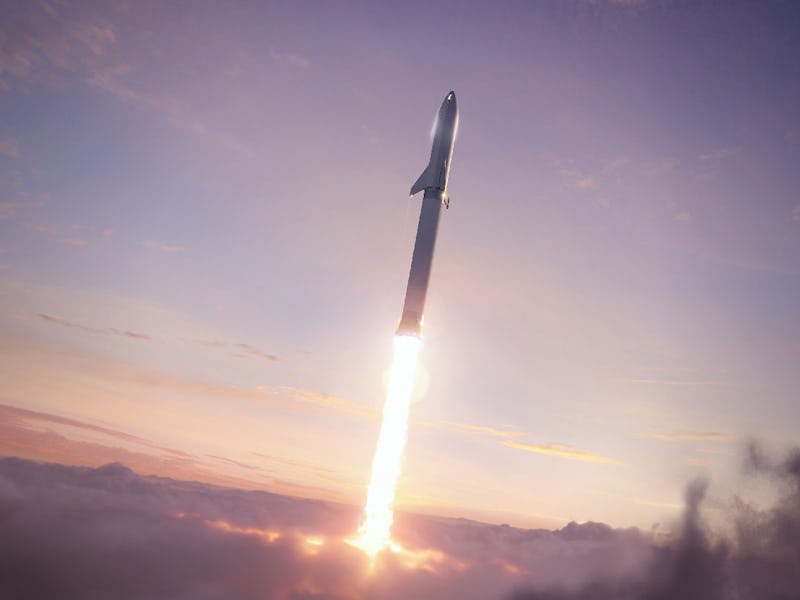SpaceX Just Completed Its First Starship Hopper Firing: 'All Systems Green'

SpaceX has taken a big step in its goal to send humans to Mars. Company founder Elon Musk confirmed on Wednesday that the Starship Hopper, a miniaturized version of the ship set to take on some of the firm’s biggest missions in the coming years, has completed its first “tethered hop.”
“All systems green,” Musk told his 25 million Twitter followers late in the evening.
It’s a key milestone that paves the way for the firm’s more ambitious trips. The scene lit up at the Boca Chica facility in Texas at 7:56 p.m. Central time, as the Raptor engine at the rocket’s base completed its firing. The test follows the Raptor’s first firing back in February, which reached 172 metric tons and 257 bar chamber pressure using warm propellant.
While these initial tests use a single engine, SpaceX plans to build from here to complete suborbital flights using three engines. The final ship is designed to use 31 engines in its booster to offer liftoff thrust previously estimated at 5,400 tons.
The Hopper tests were originally expected to take place earlier this year, but a series of delays led to a change in schedule. SpaceX originally only set itself a deadline of 2019 to conduct the first hops, but Musk stated at the start of the year that the ship could fly between four to eight weeks from then. Progress looked promising as the stainless steel construction took form, which keeps the same width as the final model but reduces the height. This shiny exterior is designed to enable transpiration cooling, making the ship “sweat” fluid, with hex heat shields acting as an alternative. However, a storm in late January pushed plans back further.
Musk explained earlier this week that the Hopper was further delayed due to ice forming in the cryogenic propellant prevalves. This system aims to cool the liquid oxygen and methane and boost Raptor performance, with predicted gains of 10 to 20 percent over the February test fire. Storing these liquids at low temperatures is an ongoing area of research, and NASA is currently aiming to store 42 liters of fluid for six months with zero loss as part of the Robotic Refueling Mission 3.
SpaceX is using these chemicals instead of traditional rocket propellant so human visitors to Mars can harvest fuel from carbon dioxide in the atmosphere to return home. It could also enable a system of planet-hopping through the use of a network of fuel depots, an idea praised by experts as potentially groundbreaking.
Once the Hopper tests are complete, the company will turn its attention to completing the ship. It plans to send Japanese billionaire Yusaku Maezawa with six to eight artists on a trip around the moon in 2023. Sometime after that, SpaceX plans to send the first unmanned Starships to Mars to lay the groundwork for a manned mission. Musk has claimed that SpaceX could complete a city on Mars as early as 2050.
Wednesday’s test may seem like a small step for SpaceX, but it could prove one giant leap for future space colonization.